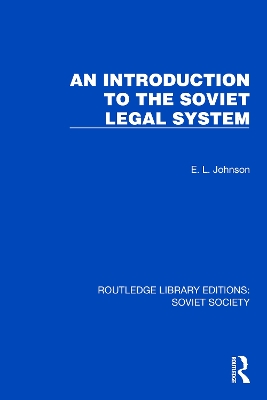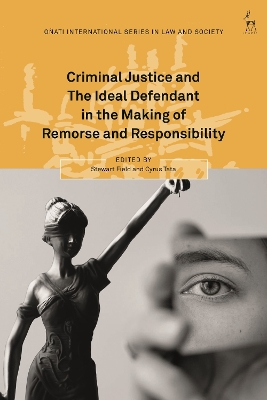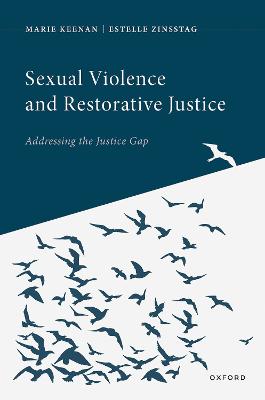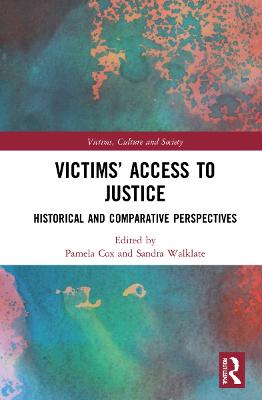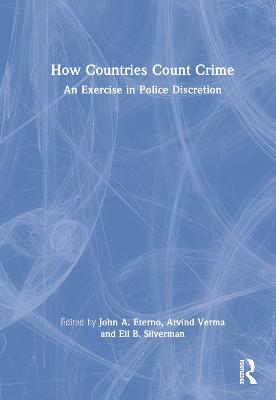Execution Culture in Nineteenth Century Britain
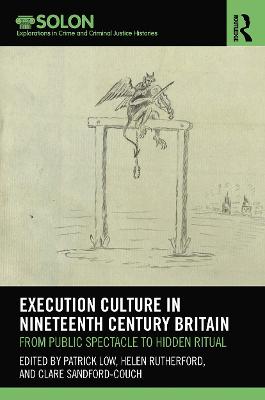 portes grátis
portes grátis
Execution Culture in Nineteenth Century Britain
From Public Spectacle to Hidden Ritual
Rutherford, Helen; Low, Patrick; Sandford-Couch, Clare
Taylor & Francis Ltd
05/2022
218
Mole
Inglês
9780367521462
15 a 20 dias
453
Descrição não disponível.
Introduction
Chapter 1, '[T]he broken stave at the top of the ladder of England's civilisation': Representing the ending of public execution in 1868.
James Gregory
PART 1: Going to See a Man Hanged:
Chapter 2, 'A practice which wounds only the living': Publicly Punishing the Criminal Body in Nineteenth-Century Scotland.
Rachel Bennett
Chapter 3, 'Every Loathsome Reptile Form of Vice and Crime'. Formulations of the Nineteenth-Century London Execution Crowd: Fears, Fictions and Realities.
Matthew White
Chapter 4, 'How Murderers Die': The Impact of the 1868 Abolition of Public Execution on Life-writing by Executioners.
Katherine Ebury
Chapter 5, 'Stand in the place of those executed': Interpreting Capital Punishment in UK Prison Museums.
Rhiannon Pickin
PART 2: 'One had better narrate the circumstances as they occurred'
Chapter 6, '[...] were sensation our object, it would not be difficult to cull from the Newgate Calendar': Periodical Journalism and Distaste for Public Executions, c. 1830-1870.
Samuel Saunders
Chapter 7, George Vass: the making and un-making of a criminal monster.
Helen Rutherford and Clare Sandford-Couch
Chapter 8, The 'Hermetically sealed' Prison: Witnessing Executions in the North East of England 1868-1878.
Patrick Low
Chapter 9, The only consolation is that the criminal is not a Welshman: The foreign-born men hanged in Wales, 1840-1900.
Stephanie Emma Brown
Index
Chapter 1, '[T]he broken stave at the top of the ladder of England's civilisation': Representing the ending of public execution in 1868.
James Gregory
PART 1: Going to See a Man Hanged:
Chapter 2, 'A practice which wounds only the living': Publicly Punishing the Criminal Body in Nineteenth-Century Scotland.
Rachel Bennett
Chapter 3, 'Every Loathsome Reptile Form of Vice and Crime'. Formulations of the Nineteenth-Century London Execution Crowd: Fears, Fictions and Realities.
Matthew White
Chapter 4, 'How Murderers Die': The Impact of the 1868 Abolition of Public Execution on Life-writing by Executioners.
Katherine Ebury
Chapter 5, 'Stand in the place of those executed': Interpreting Capital Punishment in UK Prison Museums.
Rhiannon Pickin
PART 2: 'One had better narrate the circumstances as they occurred'
Chapter 6, '[...] were sensation our object, it would not be difficult to cull from the Newgate Calendar': Periodical Journalism and Distaste for Public Executions, c. 1830-1870.
Samuel Saunders
Chapter 7, George Vass: the making and un-making of a criminal monster.
Helen Rutherford and Clare Sandford-Couch
Chapter 8, The 'Hermetically sealed' Prison: Witnessing Executions in the North East of England 1868-1878.
Patrick Low
Chapter 9, The only consolation is that the criminal is not a Welshman: The foreign-born men hanged in Wales, 1840-1900.
Stephanie Emma Brown
Index
Este título pertence ao(s) assunto(s) indicados(s). Para ver outros títulos clique no assunto desejado.
Capital Punishment;Public Execution;Modern Britain;Young Men;Execution culture;Nineteenth Century Murders;Criminal body;Criminal Bodies;Execution Crowd;Prison museums;Richard Ward;Crime Journalism;Private Executions;Bloody Code;Illustrated Police News;Public Hangings;Violated;Albert Pierrepoint;Public Punishment;Precincts;Persona;Follow;Capital Punishment History;Census;Wander;Gillan's Body;Dark Tourism
Introduction
Chapter 1, '[T]he broken stave at the top of the ladder of England's civilisation': Representing the ending of public execution in 1868.
James Gregory
PART 1: Going to See a Man Hanged:
Chapter 2, 'A practice which wounds only the living': Publicly Punishing the Criminal Body in Nineteenth-Century Scotland.
Rachel Bennett
Chapter 3, 'Every Loathsome Reptile Form of Vice and Crime'. Formulations of the Nineteenth-Century London Execution Crowd: Fears, Fictions and Realities.
Matthew White
Chapter 4, 'How Murderers Die': The Impact of the 1868 Abolition of Public Execution on Life-writing by Executioners.
Katherine Ebury
Chapter 5, 'Stand in the place of those executed': Interpreting Capital Punishment in UK Prison Museums.
Rhiannon Pickin
PART 2: 'One had better narrate the circumstances as they occurred'
Chapter 6, '[...] were sensation our object, it would not be difficult to cull from the Newgate Calendar': Periodical Journalism and Distaste for Public Executions, c. 1830-1870.
Samuel Saunders
Chapter 7, George Vass: the making and un-making of a criminal monster.
Helen Rutherford and Clare Sandford-Couch
Chapter 8, The 'Hermetically sealed' Prison: Witnessing Executions in the North East of England 1868-1878.
Patrick Low
Chapter 9, The only consolation is that the criminal is not a Welshman: The foreign-born men hanged in Wales, 1840-1900.
Stephanie Emma Brown
Index
Chapter 1, '[T]he broken stave at the top of the ladder of England's civilisation': Representing the ending of public execution in 1868.
James Gregory
PART 1: Going to See a Man Hanged:
Chapter 2, 'A practice which wounds only the living': Publicly Punishing the Criminal Body in Nineteenth-Century Scotland.
Rachel Bennett
Chapter 3, 'Every Loathsome Reptile Form of Vice and Crime'. Formulations of the Nineteenth-Century London Execution Crowd: Fears, Fictions and Realities.
Matthew White
Chapter 4, 'How Murderers Die': The Impact of the 1868 Abolition of Public Execution on Life-writing by Executioners.
Katherine Ebury
Chapter 5, 'Stand in the place of those executed': Interpreting Capital Punishment in UK Prison Museums.
Rhiannon Pickin
PART 2: 'One had better narrate the circumstances as they occurred'
Chapter 6, '[...] were sensation our object, it would not be difficult to cull from the Newgate Calendar': Periodical Journalism and Distaste for Public Executions, c. 1830-1870.
Samuel Saunders
Chapter 7, George Vass: the making and un-making of a criminal monster.
Helen Rutherford and Clare Sandford-Couch
Chapter 8, The 'Hermetically sealed' Prison: Witnessing Executions in the North East of England 1868-1878.
Patrick Low
Chapter 9, The only consolation is that the criminal is not a Welshman: The foreign-born men hanged in Wales, 1840-1900.
Stephanie Emma Brown
Index
Este título pertence ao(s) assunto(s) indicados(s). Para ver outros títulos clique no assunto desejado.
Capital Punishment;Public Execution;Modern Britain;Young Men;Execution culture;Nineteenth Century Murders;Criminal body;Criminal Bodies;Execution Crowd;Prison museums;Richard Ward;Crime Journalism;Private Executions;Bloody Code;Illustrated Police News;Public Hangings;Violated;Albert Pierrepoint;Public Punishment;Precincts;Persona;Follow;Capital Punishment History;Census;Wander;Gillan's Body;Dark Tourism

